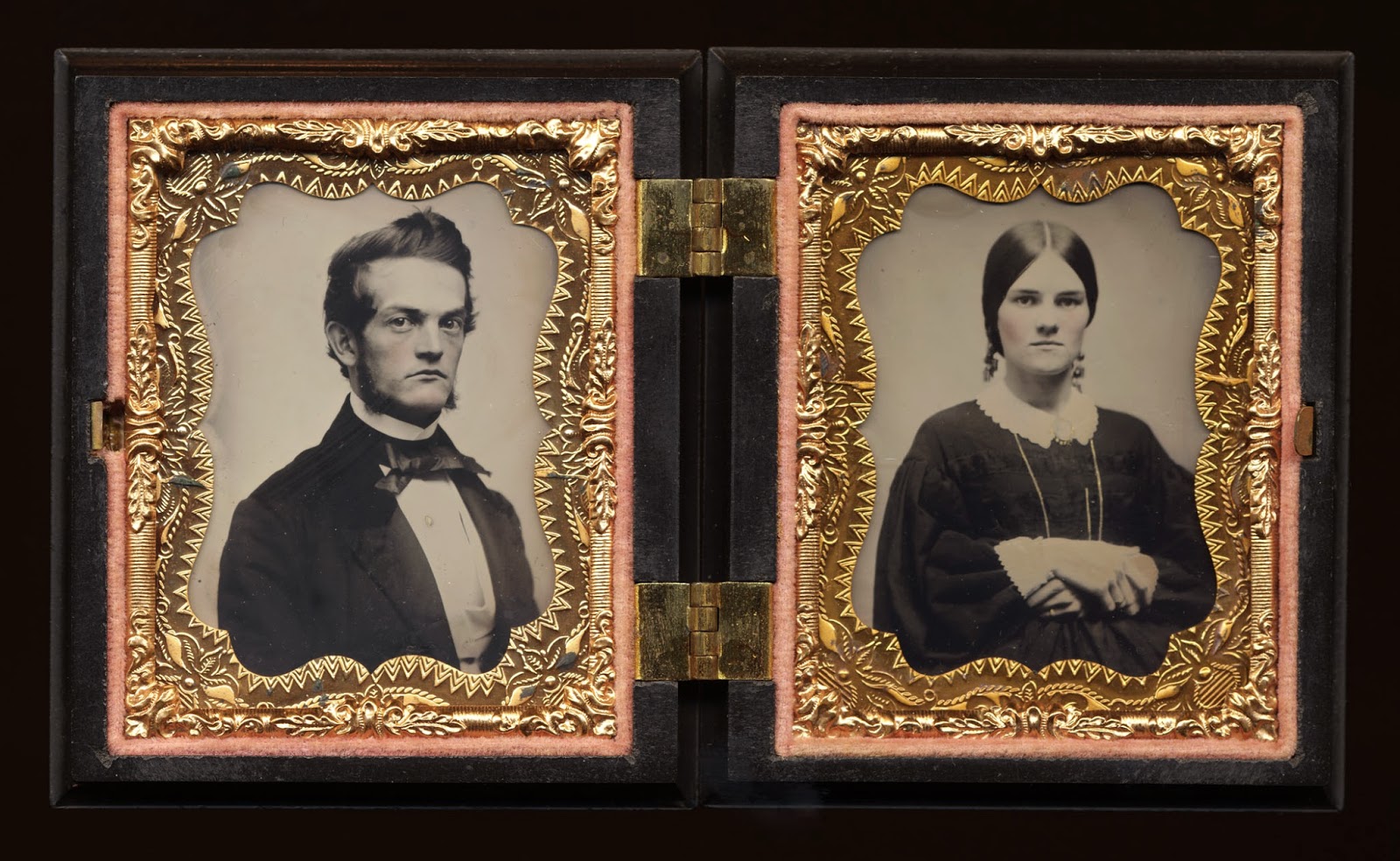by Tom Ferris, Archival Photographer
We have nearly 500,000 photographs, mostly of Montana from the 1860’s and on, in the Photograph Archives at the Montana Historical Society. Some of the most precious, intimate and visually appealing are the tintypes and daguerreotypes in our cased image collection. We recently posted
39 of these images to Pinterest.
The majority of the images selected for the cased image board are tintypes and daguerreotypes which are housed in cases constructed of leather, velvet, bakelite plastic, or even pressed and embossed cardboard.
 |
Exterior of a cased image (Montana Historical
Society Photograph Archives C989-005). |
Many are lined in velvet or satin and have small, gold colored, ornamental frames holding glass over the image for protective measures. Most are about three inches high when closed and could easily fit in a pocket or purse, so travelers were able to carry images of their loved ones when away from home or easily send them through the mail. When viewed after scanning at a high resolution, you can see bits of pocket dust and shed fabric from days past, and one case in our collection still houses a lock of hair with the portrait of a baby girl.
 |
Cased image of girl with a lock of hair pinned to interior (Montana Historical
Society Photograph Archives C977-003). |
Daguerreotypes were the earliest form of photography to be put into widespread use in the 1850s and 1860s and were first introduced in 1839. Images were exposed on silver coated plates and were quite delicate and expensive to produce. Tintypes quickly replaced them as a much less expensive and more durable option. These images were exposed on a sheet of iron coated in dark enamel and photographic emulsion, and the process was a favorite of itinerant photographers since the process required no drying time and images could be developed, fixed and handed to the customer in minutes. Both forms of photography were popular in the 1860’s and 1870’s and lesser use of the mediums persisted into the early 20th century. Today, a few photographers have revived the processes as a novelty or fine art format.
 |
Cased image (Montana Historical Society Photograph
Archives C978-012). |
Cased images are precious not only for their scarcity and aesthetic value, but also because they represent a time when having a photograph made was a special event—there was still some magic to the process, a bit of mystique. There were just not very many cameras around. Perhaps the cased images of today live in our phones, (they are case-like) but those images we carry around don’t seem to hold the sense of wonder or curiosity of the little jewels from the late 19th century. If you are interested in viewing similar images as well as other turn of the century photography, try visiting
Historical Indulgences, hosted by Tuesday Johnson. It is constantly updated with new images.
Most of the images in our collection are unidentified portraits. If you have information providing identification and other photographic proof to support this information, please contact the MHS Photo Archives at
photoarchives@mt.gov.


